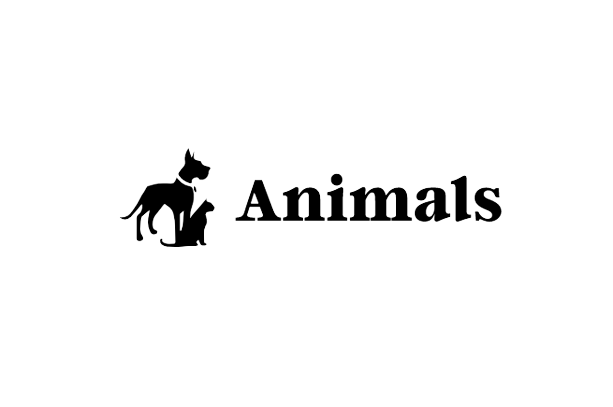The Adorable Vaquita: A Critical Endangered Species

Introduction
Welcome to the fascinating world of the Vaquita, an adorable and critically endangered porpoise that resides in the Gulf of California. With an estimated population of fewer than 10 individuals, the Vaquita faces imminent extinction. In this comprehensive article, we will delve into the life and struggles of this remarkable creature, explore the challenges it encounters, and discuss the conservation efforts aimed at its protection. Join us on this educational journey as we discover what makes the Vaquita so unique and how we can contribute to its survival.
The Vaquita: Nature's Delicate Gem
The Vaquita (Phocoena sinus), also known as the "Gulf of California harbor porpoise," is the smallest cetacean in existence. It measures up to 5 feet (1.5 meters) in length and weighs approximately 120 pounds (55 kilograms). With its striking black patches around the eyes and lips, the Vaquita captures the hearts of marine enthusiasts worldwide. Let's get a better look at this amazing creature.
Vaquita's Appearance
The Vaquita boasts a sleek and streamlined body perfectly adapted for life in the ocean. Its dorsal side showcases a dark gray color, while the ventral side appears lighter, varying between shades of white and gray. This coloration, coupled with its contrasting black patches, creates a visually stunning spectacle.
Vaquita's Habitat
The Gulf of California, also known as the Sea of Cortez, is the sole home of the Vaquita. Its range is limited to this unique and vibrant ecosystem, which stretches approximately 700 miles (1,100 kilometers) in length. Within this region, the Vaquita prefers shallow coastal waters, particularly near the mouths of rivers and lagoons.
Vaquita's Diet
The Vaquita is a master hunter of the sea, feasting primarily on fish, squid, and crustaceans. Its preferred prey includes various species of mesopelagic and bathypelagic fish, which it captures using echolocation—a biological sonar system employed by toothed cetaceans. With incredible precision, the Vaquita navigates through the depths, locating its prey with astonishing accuracy.
The Vaquita's Precarious Existence
Unfortunately, the Vaquita faces numerous threats, which have driven it to the brink of extinction. Let's explore the challenges that this remarkable species must overcome to survive.
Illegal Fishing Activities
Vaquitas inadvertently fall victim to gillnets—vertical walls of netting that are used by illegal fishermen to catch totoaba fish, whose swim bladders are highly sought after in Asian markets. These gillnets pose a significant threat to the Vaquita, as they entangle and drown them, making illegal fishing the primary cause of their decline.
Declining Habitat
The Vaquita's habitat is under constant pressure from human activities. Pollution, habitat degradation, and climate change all contribute to the dwindling availability of suitable habitats for the Vaquita. These factors, combined with the ongoing decline in fish populations, further exacerbate the challenges faced by this endangered species.
Low Reproductive Rate
Vaquitas have a slow reproductive rate, with females giving birth to a single calf every two years. This limited reproductive capacity hampers the species' ability to recover from population declines, making it particularly vulnerable to external threats.
Lack of Awareness
One of the biggest obstacles in conserving the conservation efforts for the Vaquita is the lack of awareness among the general public. Many people are unaware of the existence of this incredible species and the urgent need to protect it. By spreading awareness and educating others about the Vaquita's plight, we can inspire action and garner support for conservation initiatives.
Vaquita Conservation: A Race Against Time
Despite the daunting challenges faced by the Vaquita, numerous organizations and dedicated individuals are working tirelessly to ensure its survival. Let's explore some of the remarkable conservation efforts underway to protect this endangered species.
- Monitoring and Research
Scientists and researchers are conducting extensive monitoring and research programs to better understand Vaquita's behavior, population dynamics, and habitat requirements. This knowledge is crucial in formulating effective conservation strategies.
- Fishing Restrictions and Bans
To combat illegal fishing and reduce the Vaquita's accidental bycatch, fishing restrictions, and bans have been implemented in the Gulf of California. These measures aim to protect both the Vaquita and the totoaba, promoting sustainable fishing practices and safeguarding the delicate marine ecosystem.
- Community Engagement
Engaging and involving local communities in conservation efforts is essential for long-term success. Conservation organizations are collaborating with fishermen, coastal communities, and stakeholders to raise awareness, provide alternative livelihood opportunities, and foster a sense of ownership and stewardship toward the Vaquita's survival.
- International Cooperation
Recognizing the global importance of Vaquita conservation, international collaborations have been established. Governments, NGOs, and conservationists from around the world are working together to address the complex issues surrounding the Vaquita's decline, combining their expertise and resources for a united front against extinction.
- Captive Breeding Programs
In a last-ditch effort to save the Vaquita, plans for a captive breeding program have been proposed. This initiative aims to capture a small number of individuals to establish a breeding population in a controlled environment. While controversial, this option holds the potential for ensuring the species' survival and genetic diversity.
- Technological Innovations
Advancements in technology have also played a role in Vaquita conservation. Innovative monitoring techniques, such as the use of acoustic sensors and drones, enable scientists to gather valuable data on Vaquita populations and their habitats. This information aids in designing targeted conservation strategies and identifying potential threats.
Frequently Asked Questions (FAQs)
Q: What is the current population of the Vaquita?
A: The Vaquita population is estimated to be fewer than 10 individuals, making it one of the most critically endangered marine mammals.
Q: What are the major threats to the Vaquita's survival?
A: The Vaquita faces threats such as illegal fishing, habitat degradation, pollution, climate change, and a low reproductive rate.
Q: Are there any protected areas for the Vaquita?
- A: Yes, efforts have been made to establish protected areas in the Gulf of California to safeguard the Vaquita's habitat and restrict fishing activities.
Q: How can I contribute to Vaquita conservation?
- A: You can support Vaquita conservation by raising awareness, making sustainable seafood choices, donating to conservation organizations, and advocating for stronger environmental regulations.
Q: Can the Vaquita be saved from extinction?
- A: While the situation is critical, with collective efforts and conservation measures, there is hope for saving the Vaquita from extinction.
Q: What are the long-term implications of Vaquita extinction?
- A: The loss of the Vaquita would disrupt the delicate balance of the Gulf of California's marine ecosystem. It would have cascading effects on the food web, as the Vaquita plays a vital role in maintaining the balance of the ecosystem. Additionally, the loss of such a unique and charismatic species would be a devastating blow to global biodiversity and conservation efforts.
Conclusion: Together, We Can Save the Vaquita!
The Vaquita's future hangs in the balance, and the time to act is now. By understanding the challenges it faces, supporting conservation initiatives, and raising awareness, we can make a difference in saving this precious species from extinction. Remember, every individual effort counts, and together we can protect the Vaquita and preserve the wonders of our natural world for future generations.
So, let's join forces, spread the word, and work towards a brighter future for the Vaquita. Together, we can make a positive impact and ensure the survival of this adorable and critically endangered species.






0 Comments